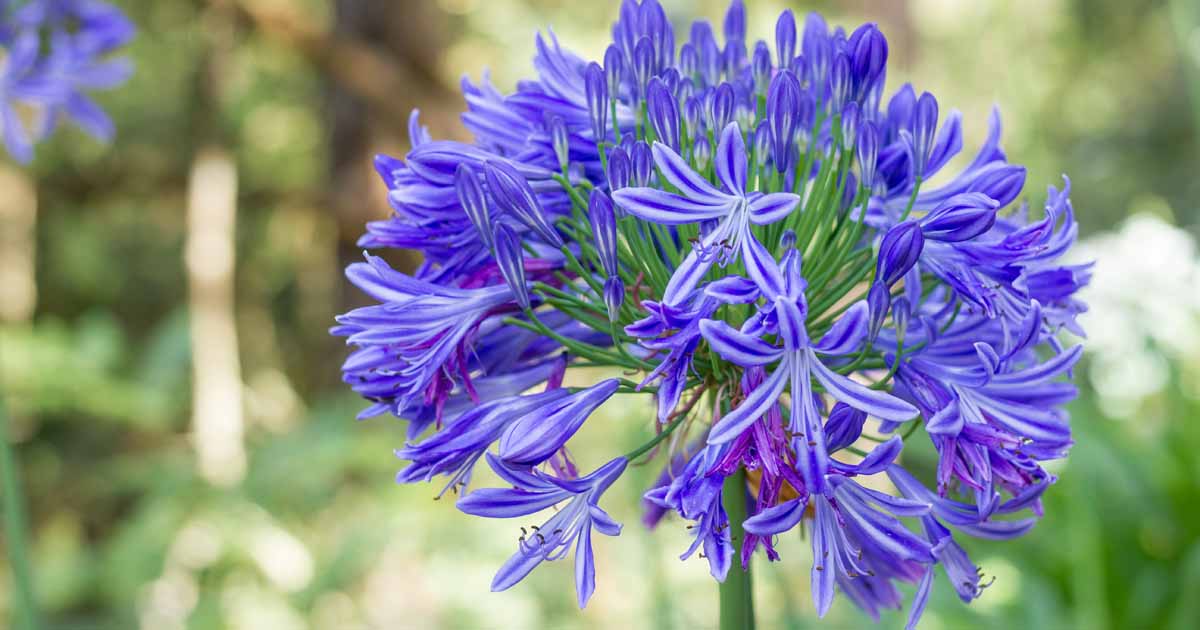How To Grow And Care For A Agapanthus Plant
There's something magical about walking through a garden, admiring the plants and flowers that bloom in vivid colors. One particular favorite is the Agapanthus, known for its striking blue and purple flowers that add a pop of color to any garden. This popular plant, also known as the Lily of the Nile, is a must-have for any lover of gardening.

Plant Attributes
The Agapanthus is a perennial plant that can grow up to 6 feet tall. It thrives in full sun or partial shade and prefers well-draining soil. The plant blooms in the summer, producing stunning blue or purple flowers that sit atop tall stalks. The flowers attract hummingbirds, butterflies, and bees, making it a great addition for pollinators.
The plant comes in different varieties, with some producing white or pink flowers. One popular cultivar is the Agapanthus africanus, which is known for its large, round umbels of bright blue flowers. Another is the Agapanthus praecox, also known as the Blue Lily, which is a dwarf variety that grows up to 2 feet.
Plant Care
Like most plants, the Agapanthus requires care and attention to thrive. When planting, make sure to choose a well-draining soil and a location that receives plenty of sunlight. The plant needs to be watered regularly, especially during the hot summer months, but avoid over-watering, as this can lead to root rot.
To ensure healthy growth and blooming, fertilize the plant with a balanced fertilizer in the spring and fall. Avoid fertilizing during the winter, as this can damage the plant. Additionally, remove any dead flowers and leaves to prevent disease and encourage new growth.
Pruning
Pruning is a crucial part of Agapanthus care. In the late fall or early spring, cut back the foliage to just above the soil line to encourage healthy growth and blooming. Additionally, remove any dead or damaged leaves throughout the year to prevent disease and maintain the plant's appearance.
Propagation
The Agapanthus can be propagated through division or seed. Propagation through division involves separating the plant into smaller sections with a sharp knife and replanting them in well-draining soil. Propagation through seed involves collecting the seeds after blooming and planting them in a protected area until they are ready to be transplanted.
Potting & Repotting
The Agapanthus can be grown in containers, making it a great option for those with limited garden space. When potting, choose a container with drainage holes and use a well-draining potting mix. Repot the plant every few years or when the container becomes too small.
Common Pests & Plant Disease
The Agapanthus is relatively pest and disease-resistant, but it can be affected by snails and slugs. These can be controlled by using snail and slug bait or traps.
Common Problems
One common problem with the Agapanthus is improper flowering. This can be caused by over-fertilizing or lack of sunlight. To encourage blooming, fertilize the plant sparingly and ensure it is in a location that receives plenty of sunlight. Additionally, make sure to prune the plant properly to encourage healthy growth and blooming.
The Agapanthus is a stunning plant that is sure to add beauty and color to any garden. With proper care and attention, this perennial will provide years of blooming enjoyment.



Post a Comment for "How To Grow And Care For A Agapanthus Plant"